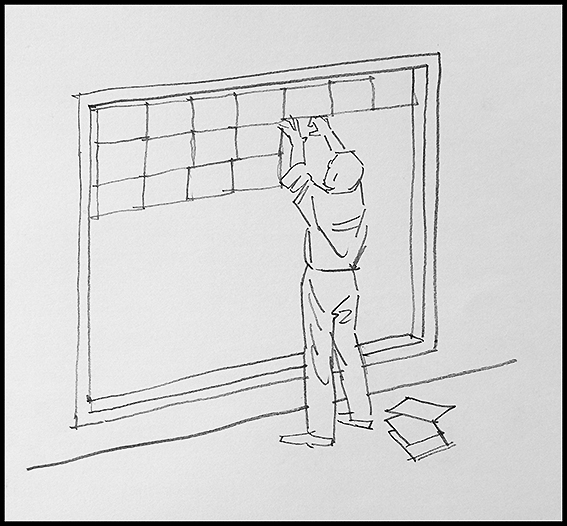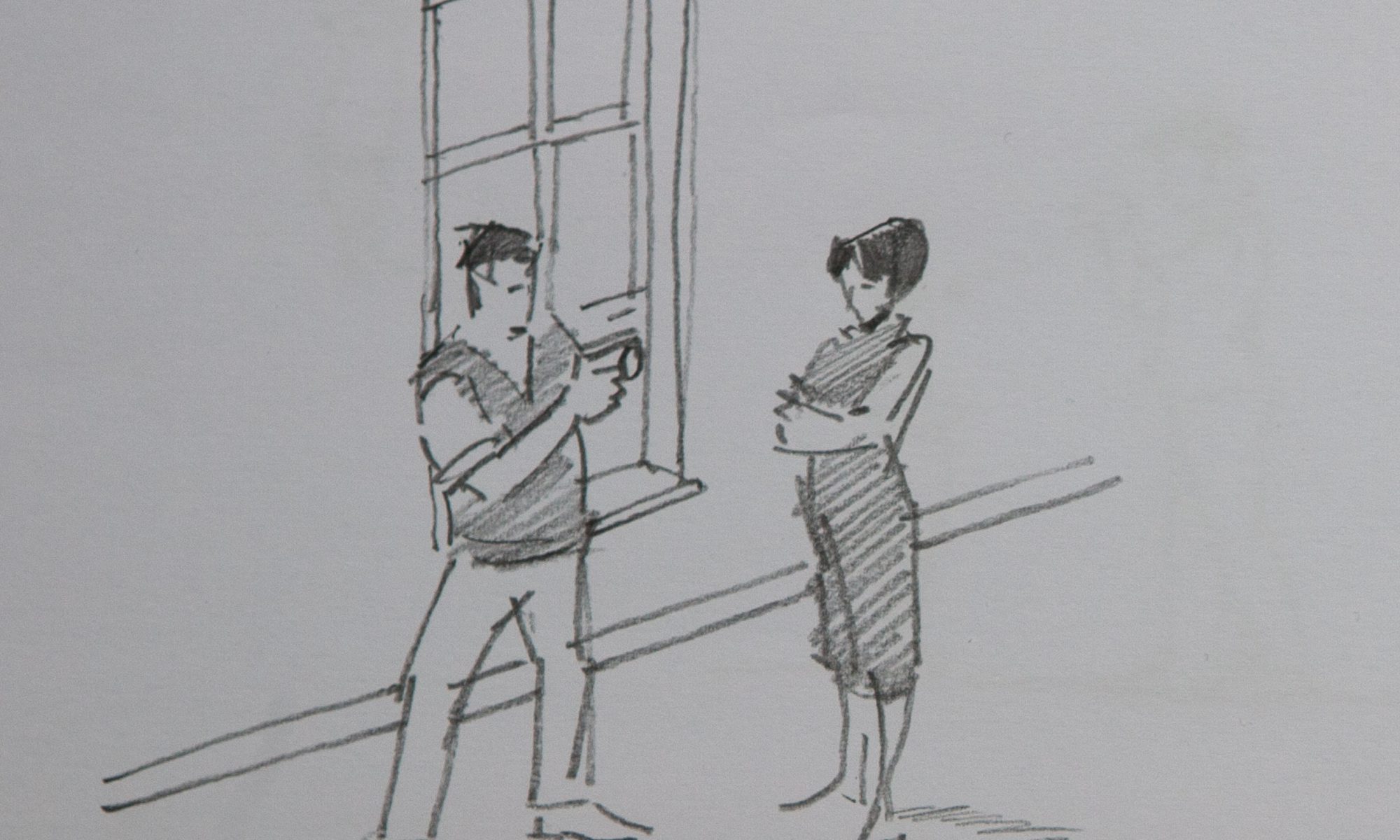Another water colour of the view from our kitchen window. “Chelva during heavy rains.” From now on I will show you every now and then a new watercolour from our village.
Portrait painting, my daily job
Portrait painting, my daily job
For years and years portrait painting is my daily job. Commissioned work or not, it belongs to me as Niagara belongs to Falls. I can´t imagine doing something else. It always has been a great privilege to be able to do what I am good at. And it still is. But I really should be paving the way to dedicate more time to do watercolour landscape. We live in a very picturesque setting and there is always a nice motive worth painting. Below a watercolour of the village that I made last year and changed a bit this morning.
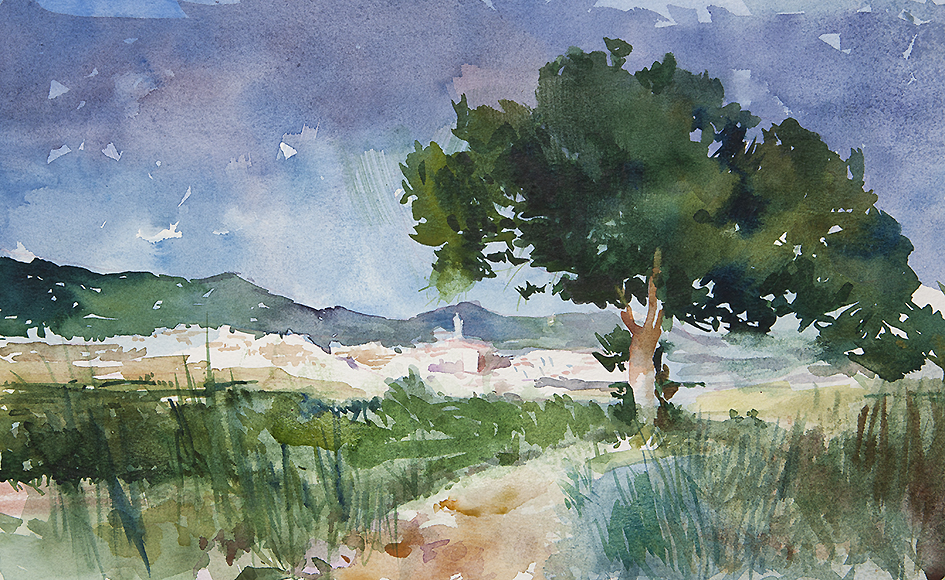
Portrait painting & hanging garlands.
Portrait painting & hanging garlands.
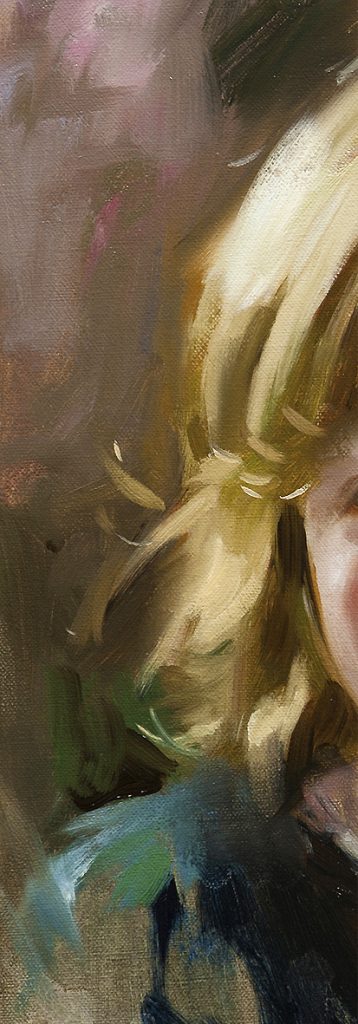 In portrait painting it is always a matter of the right colour in the right place. Nothing more, nothing less. Even so in landscape and still life painting, but an important difference with portrait painting is the issue of the likeness of the face. In my commissioned work I really want to show the best likeness I can. I am not Matisse who once answered a disappointed lady seeing the portrait he made. “But this is not me”, she said. Indeed, he replied, this is a Matisse! For me likeness is fundamental. But in a portrait there are areas where similarity is not so much at issue. For instance in the hair. Of course the whole haircut must be right and recognizable, but especially in this zone a painter can show more freedom. Smooth brushstrokes. Some say Happy Brushstrokes. I call it Hanging the Garlands. Hanging garlands means having a party. That is my intention here. In this detail I hope you can see what I mean.
In portrait painting it is always a matter of the right colour in the right place. Nothing more, nothing less. Even so in landscape and still life painting, but an important difference with portrait painting is the issue of the likeness of the face. In my commissioned work I really want to show the best likeness I can. I am not Matisse who once answered a disappointed lady seeing the portrait he made. “But this is not me”, she said. Indeed, he replied, this is a Matisse! For me likeness is fundamental. But in a portrait there are areas where similarity is not so much at issue. For instance in the hair. Of course the whole haircut must be right and recognizable, but especially in this zone a painter can show more freedom. Smooth brushstrokes. Some say Happy Brushstrokes. I call it Hanging the Garlands. Hanging garlands means having a party. That is my intention here. In this detail I hope you can see what I mean.
I have just finished this painting and it will be delivered next month.
Once I have the client´s permission I will show the entire portrait.
Awfully difficult!
Awfully difficult!
A few years ago I had to do a commission of a family portrait. Three children on the same canvas. The youngest six years old, the oldest thirteen. I had an appointment on Saturday for a first meeting and Sunday to do the photo session. During my first visit I noticed immediately that the lighting in the room where I should take the pictures, would cause problems. A low winter sun was shining full on the kids and I wanted to avoid that at all costs. That I had experienced before and knew what to do.
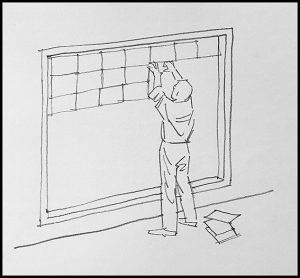
I would have to mask the big window with transparent paper so that the sunlight would be filtered. I had no transparent paper with me, but I had time to go and buy. The only thing I could get in the stationery store was a box of loose sheets, A3 size. So I bought that, and some tape. Well prepared, I returned the next morning at the family´s house and began covering the window. Quite a chore. The oldest of the three followed me with scrutiny. He did not trust my method at all and looked at me scornfully. However the shoot went well and in the end the portrait was beautiful. I delivered the large painting. When the canvas was unpacked, the oldest stared in amazement at the result. He looked at me and asked, did you make that? I nodded. “You mean you really did this yourself? But that’s awfully difficult!” He said in disbelief. After all that fumbling with transparent paper he had no high opinion of me.
Awfully difficult! And such reactions I hear frequently: “I cannot understand how you can do this” I realize there is a lot of mystique and wonder about what we, portrait painters, do. So I decided to prepare a lecture on portrait painting. That will be in the castle of Heeswijk Dinther in Holland next autumn. Later I will give you more information.
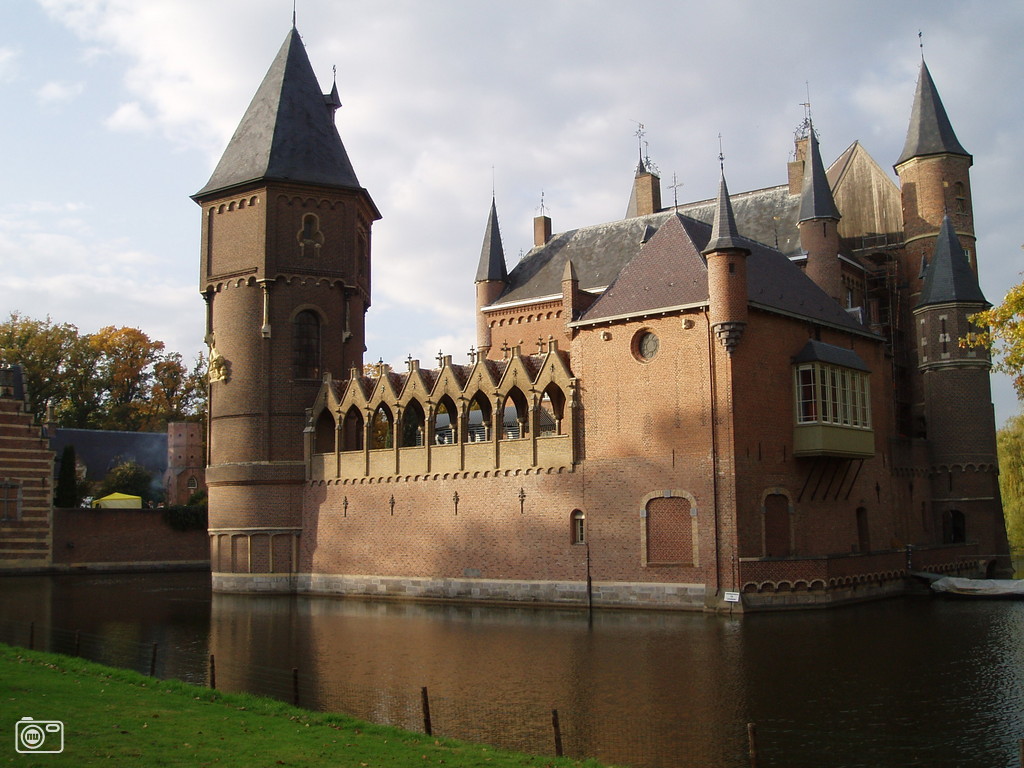
Expressions of the hand.
Expressions of the hand.
The face is well schooled to self control as a rule, and may become an aid in dissimulation of thought and feeling. Rarely is the hand so trained; and responding unconsciously to the mental states, it may reveal what the face would conceal. This is what Bridgeman says in his chapter about the hand. And: The hand of age represents the end product, the insanity of over-modification; furrowed, wrinkled with scars of time, with enlarged squared joints, and shaky. Types of hands may be classified as: square, round, compact, long or short; thick or thin.
I love to paint a portrait that shows the hands. Sometimes the sitter does not know what to do with his hands. To give it a natural posture occasionally I ask the model to hold glasses in his hands (if the model needs to wear glasses of course). It can be a discreet component which may add interest to the whole painting.
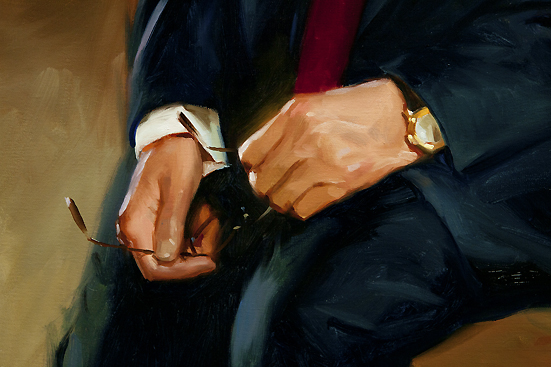
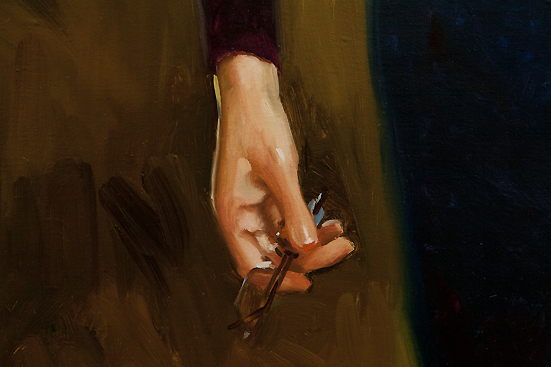
Frequently asked question: Hands are the most difficult parts in a portrait, are they?
If you know the construction of the hand, let´s say the architecture, hands does not give so much trouble as people think they do. No, I have to admit, for me the most difficult parts in a portrait are the corners of the mouth. That is where the expression of mood lives, together with the eyes. There is the key to the soul of the person.
Rijksmuseum Amsterdam
Rijksmuseum Amsterdam
It takes only 15 nights before the Rijksmuseum in Amsterdam opens after being closed for years. It will be opened officially by the Dutch Queen Beatrix, her last official act as Queen of the Netherlands. But what is more relevant is that the most important Dutch museum opens its doors to the public again. Admire the Dutch Masters and much more…
I am looking forward visiting the museum the next time when I will be in Holland.
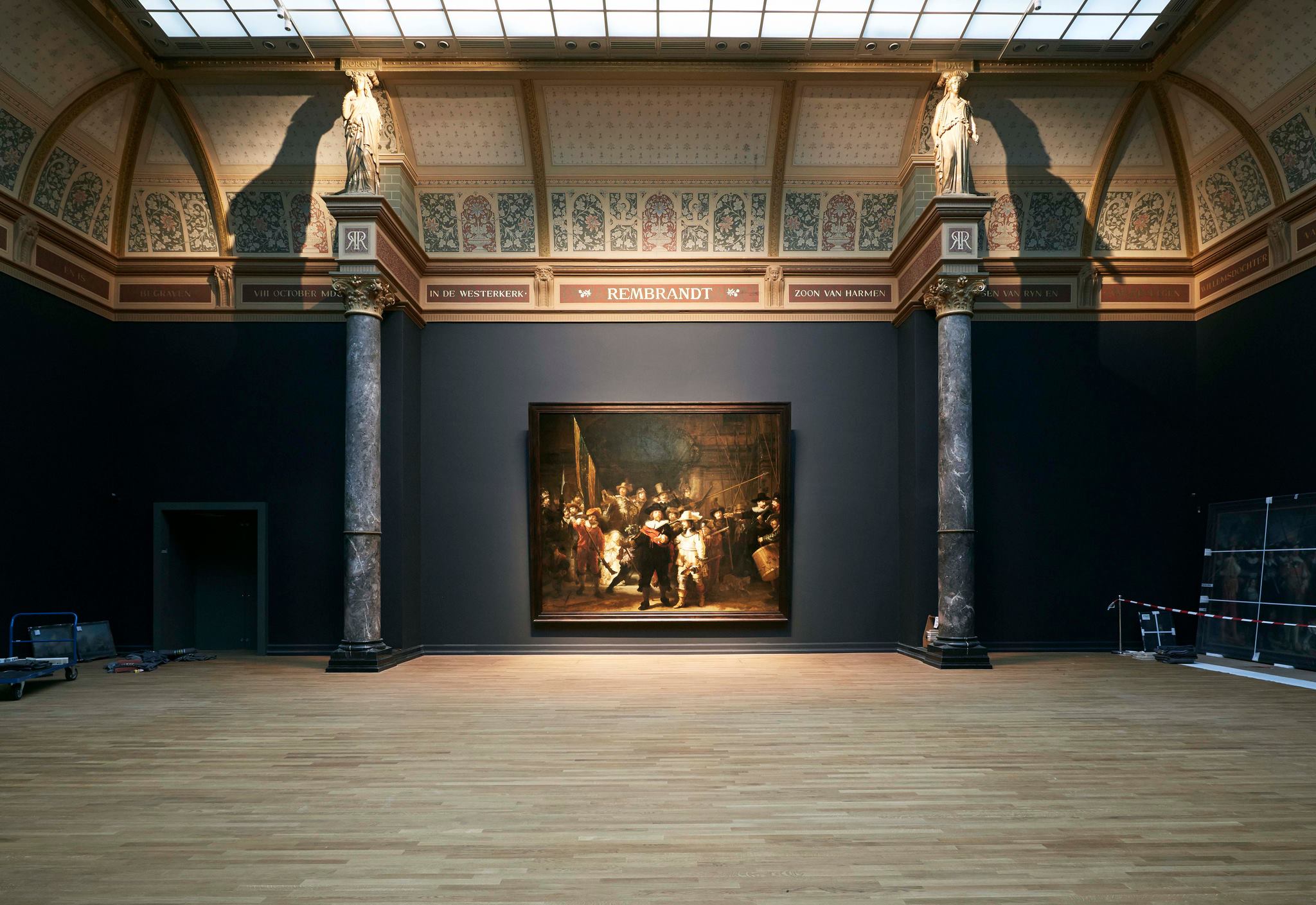
More about photography.
More about photography.
As you have seen I use my professional photographer´s kit to make the pictures of my models. I must rely on good materials since portrait painting is my full-time profession. However, also with good amateur stuff you can make good pictures. For the beginner a few tips, some dos and don’ts. Let me start with a common mistake. Don´t use the flash on your camera. This flash blows away all the shadows. And shadows are fundamental in portrait painting: with good shadows you will get an easier grip on the likeness.

If you are a beginner keep the lighting simple. A window where no direct sunlight comes in is good for a simple lighting. Place yourself almost near the window and put your model in front of you. Take care that three thirds of the face is in the light.

Put your camera at the same level as the model´s head, unless you want to emphasize that the model looks up to you or looks loftily. Think about that.

Don´t get your camera too close to the model´s face because of the wide angle distortion: Big nose and small ears, not a very flattering picture. So keep some distance.

Don´t put your model so far away that the whole body fills your image if you only need the face. That is a waste of all the lost pixels.
In the future I will pay more attention to photography. Good photography is fundamental.
See also: Portrait painting lessons (1)
Contact with the model and photography.
“Painting a portrait is not just painting a picture, it is a celebration of the person.”
Long time ago I read this statement and I decided to make it my motto. When I started this blog I had in mind to explain what is involved in painting a portrait.Not only about painting techniques but also about inspiration and motivation, concentration and preparation. In another way: to explain my motto.
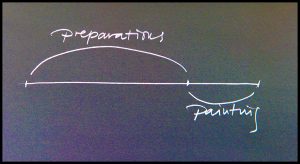 I am convinced that two thirds of making a portrait is in the preparation and only one third covers painting the portrait itself. Today I want to tell you about the most important part of the preparation:
I am convinced that two thirds of making a portrait is in the preparation and only one third covers painting the portrait itself. Today I want to tell you about the most important part of the preparation:
The contact with the model and photography.
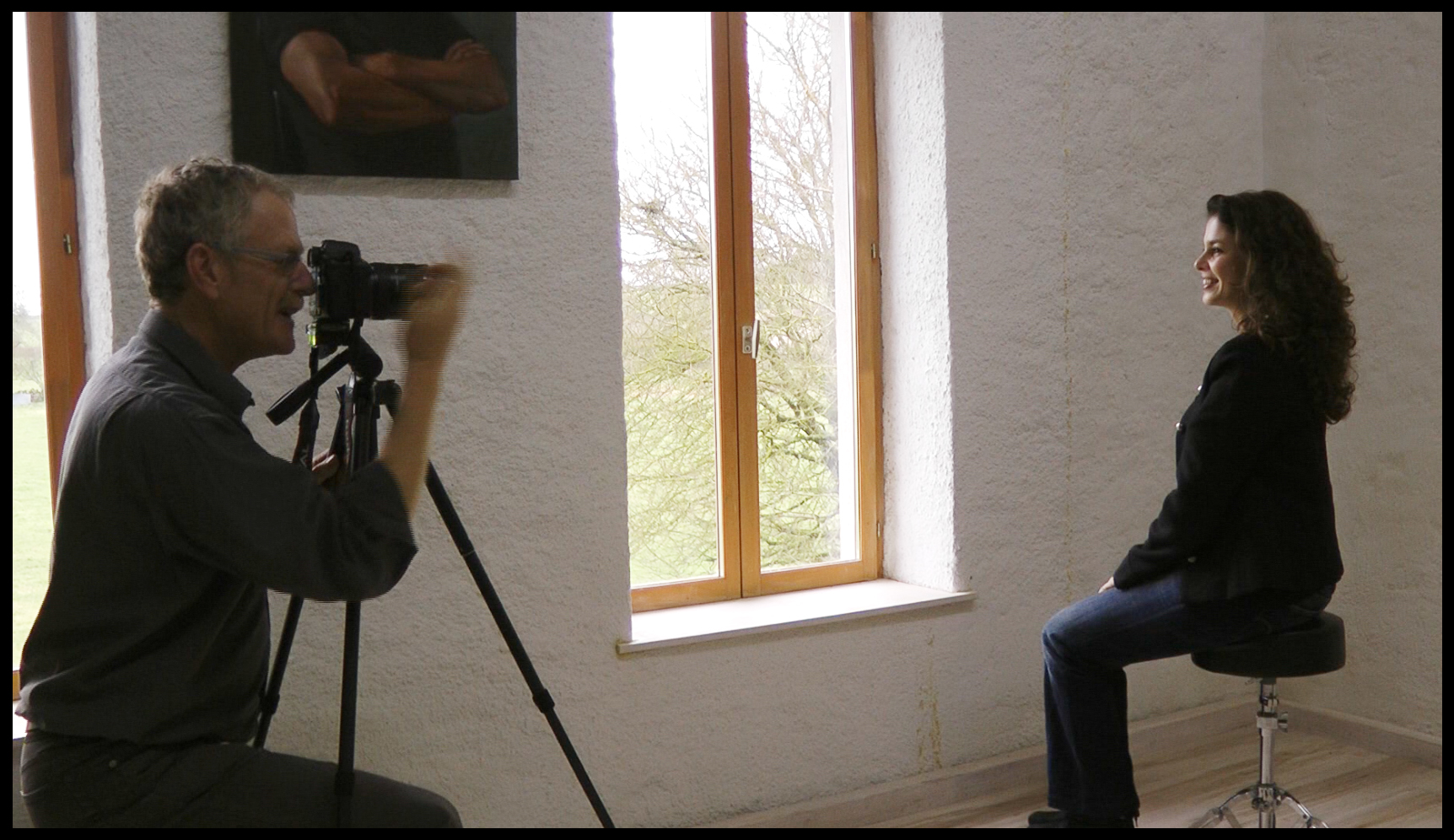
The last two weeks I was out on a number of portrait commissions. I went to visit people I have never met in my life met. People that expect from me to make them a nice portrait. To me that is a known and usual course of business. However for most people this is very special and they do this only once in their lives. Sometimes they are tense but always expectant. Most people are not accustomed to pose and some doubt whether they will do it right. It is my job to give the model confidence. Confidence in the good outcome, trust that he or she will be imaged favorably. People who are too modest, I might have to encourage, people with a big ego I try to temper. Noisy kids I try to calm and I try to provoke shy kids. But I need to have good eye for their unique caracter and I must not overpower this.
Photo sessions are so delicate that I always try to have an appointment the day before. A visit without cameras. In advance I will get an idea of the sitter. And what is more important, the model will get an impression of who I am. The sitter has to give me something that I can give back in the portrait. And that has everything to do with trust and harmony. I see it as my job to be a faithful reporter of these important characteristics.
See also: Portrait painting lessons (1)
One of my favorite Spanish painters.
One of my favorite Spanish painters.
I think you might have heard of the fabulous painter Joaquin Sorolla. He really is one of my heros. He was friends with Anders Zorn among others. Great painters that lived 100 years ago. If ever there is an exhibition of these two Masters of Painting, please use that occasion! Even if you have to travel days. It will have a major impact. They kept me anyway from sleeping.
Less known is Emilio Sala y Frances (1850-1910)
Born in Alcoy (Alicante) and lived in Valencia and Paris, died in Madrid. I show two of his masterpieces. What impresses me is the great power in his work. The painting of José María Semprún is an example of the prototype of the male bourgeois portrait. A bon vivant of the Bell Epoque. What a brilliant and expressive look. And take a close look at the simple and efficient brushwork. I can´t get enough of it!
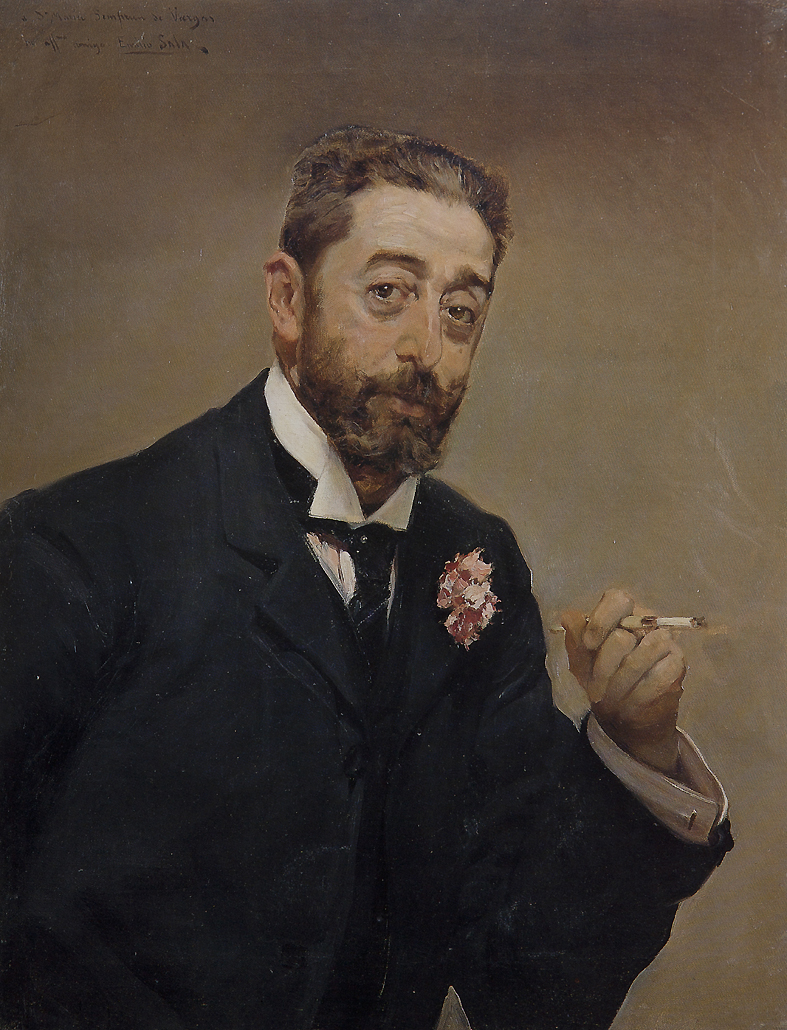
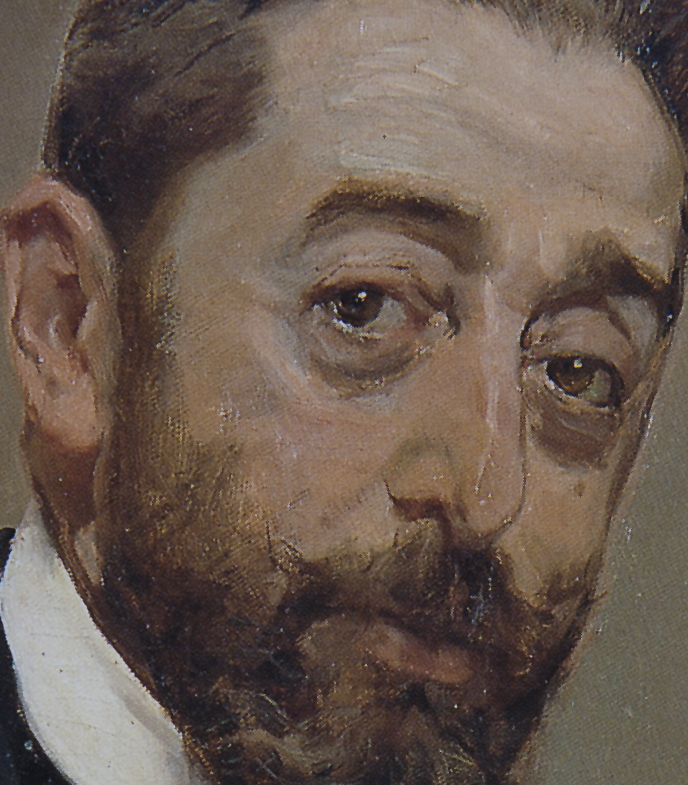

- Emilio Sala. Retrato de señora.
Portrait commissions.
Portrait commissions.
Next week I will be traveling for some portrait commissions. I go to Switzerland and Holland to meet new clients. I will be back beginning of march and I will not be able to write so much on my blog.
 Every portrait commission means packing suitcases. This time I want to travel with as little as possible luggage. That is why I tried to pack all the photography equipment and my cloths and stuff in one single suitcase. Hand luggage, so it must not weight more than 10 kilo´s.
Every portrait commission means packing suitcases. This time I want to travel with as little as possible luggage. That is why I tried to pack all the photography equipment and my cloths and stuff in one single suitcase. Hand luggage, so it must not weight more than 10 kilo´s.
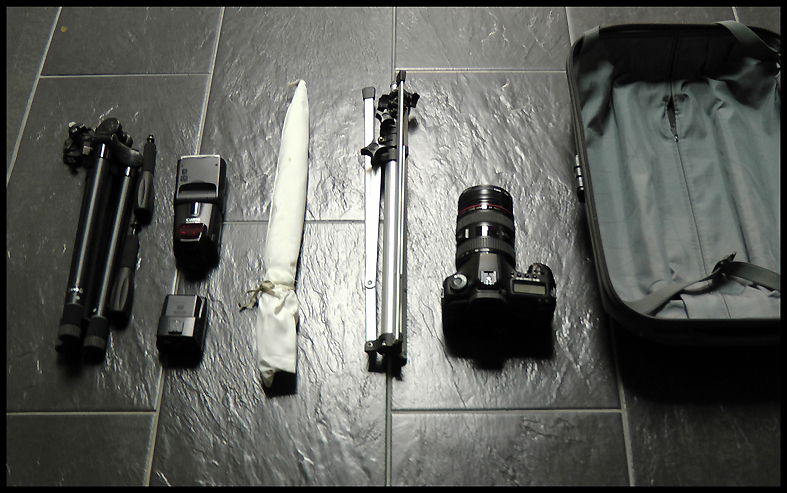
My Photo gear: 1. Tripod 2. Canon Speedlite 580 EX 3. Canon Speedlitetransmitter ST-E2 4. Light-umbrella 5. Tripod for flash 6. Canon 5D camera. And of course a small sketchbook.
And some Swiss money. Look the beautiful Swiss banknotes!



